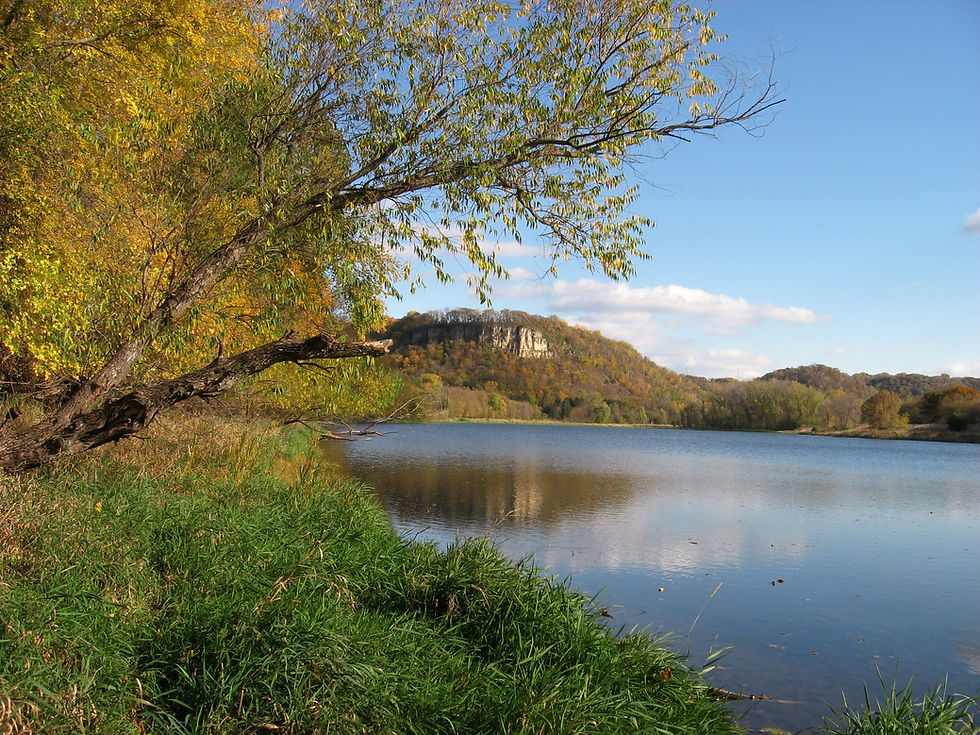"Celestial Wonders And Feeding Habits Of Downy Woodpeckers"
- wacoutanaturenotes
- Nov 26
- 3 min read

During the years of 2024 and 2025, there has been an increase in northern lights observations in our area, This is due to the sun reaching the peak of its 11 year cycle.
This peaking leads to more charged particles being ejected resulting in intense colorful displays. This photo was taken off Greens Point on November 11th by Tom and Peggy Wolner.

Sunrises this time of year are so much more colorful because of a combination of a lower sun angle allowing light to travel through more of our atmosphere.
These conditions allow more long wavelength colors like red and orange to become visible. I took this morning in the early morning of November 23rd.

By far the most common year-around resident birds to visit our backyard feeders are downy woodpeckers. Their most sought after nourishment is suet. However, they will also take advantage of available peanuts and sunflower seeds.

During the months of November and December, I enhance the food available for wintering birds by sharing the proceeds from my recent deer hunt. I secure the carcass of the animal high up in our backyard apple tree. Of course, this is done with Kathy's permission.
The first birds to take advantage of the situation are crows. Sometimes as many as half a dozen, When their appetite is satisfied, the downy woodpeckers move in to feed.
Our local coyote population must have been attracted to the odor wafting from our apple tree. At 11:00 pm on November 21st, they let loose with a spine chilling howling display for at least a minute awakening a couple neighbor dogs.

If you were a frequent hiker along the prairie this past summer and fall, you probably noticed an unusual growth on some of the goldenrod plants. These growths are referred to as galls.
These growths are triggered by the saliva of a goldenrod gall fly larva. The female fly lays an egg on the stem. When the egg hatches into a larva, it secretes a chemical stimulating the plant to form a protective shelter.

During the winter months when food is scarce, downy woodpeckers have been known to feed on the larva inside these galls. They peck a hole in the gall and use their barb tongue to extract these energy rich grubs.
Prior to the proliferation of wax worms available at bait shops, ice fishermen would use these grubs to catch winter panfish.

Both female and male downy woodpeckers are involved in excavating a nest cavity in a dead and often soft wood of a standing tree. These cavities are from 6 to 12 inches deep and wider at the bottom making room for the eggs and incubating bird.

With the impending winter rain and snowstorm headed our way for Thanksgiving, don't you often wonder how our small songbirds survive the night in these conditions?
Woodpeckers often excavate special roosting holes. These cavities are not as large as a nesting cavity, but provide enough protection from the wet and cold winds to survive.

According to the bird migration observers at Hawk Ridge in Duluth, they reported the main southerly migration for red-tailed hawks usually takes place around the 3rd week of October. Many of these hawks continue heading further south, but several take up residency for the winter in our area.
This winter as you travel around this area, keep your eyes open for a large hawk perched at the top of a power pole. If you observe one, chances are it is a red-tailed hawk.




Gorgeous photos! I looked at this on my laptop for the first time instead of my phone. What a difference! Love it! Thanks, Bruce!
Another great blog! thank you
Wow - what great pictures! Love the Northern Lights colors!
Thank you for your interesting blog. Actually I have wondered how small birds survive the rain, wind, and snow. I feel better knowing they might have a cozy niche so they can escape the bad weather. As always, great photography.